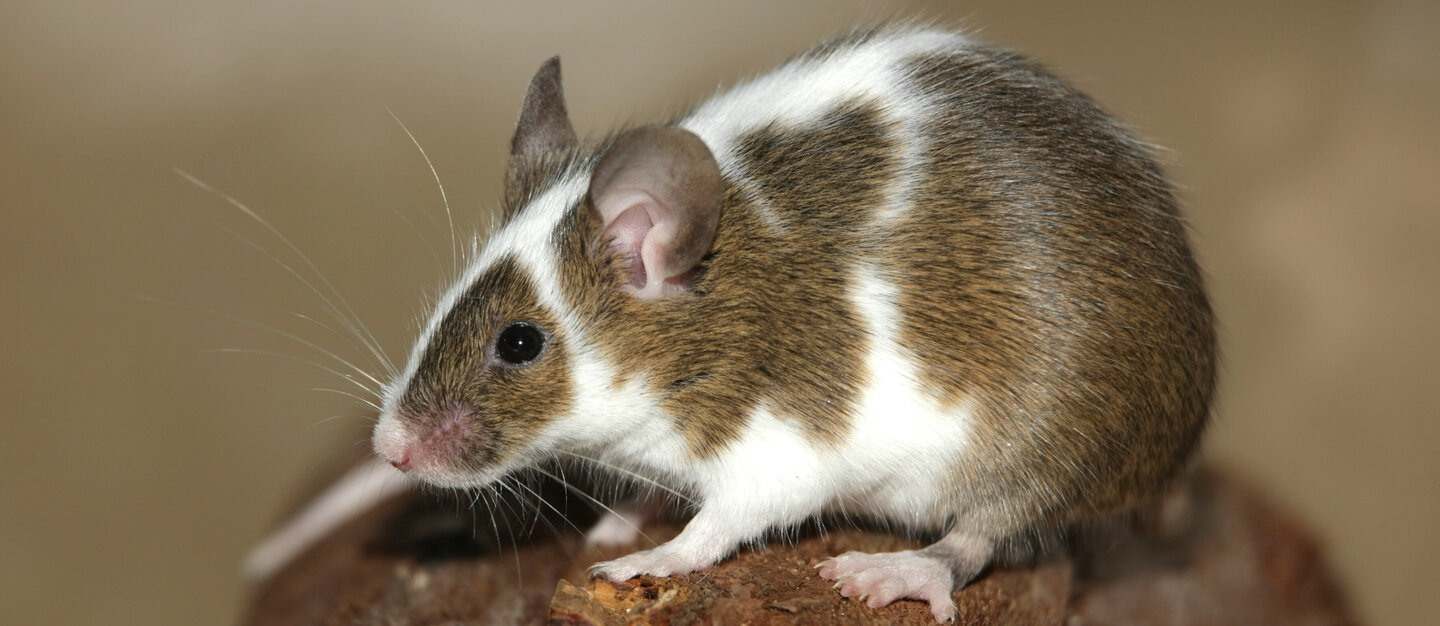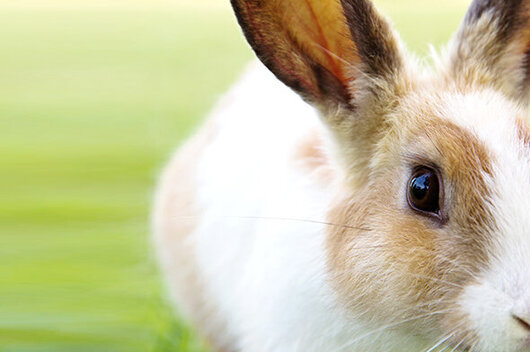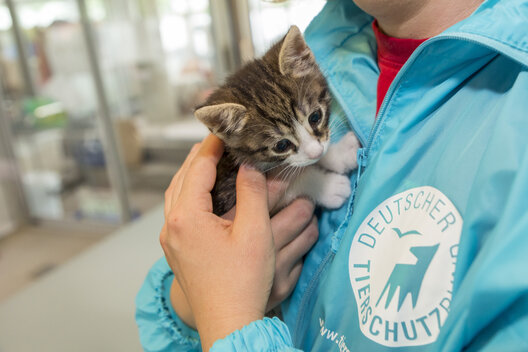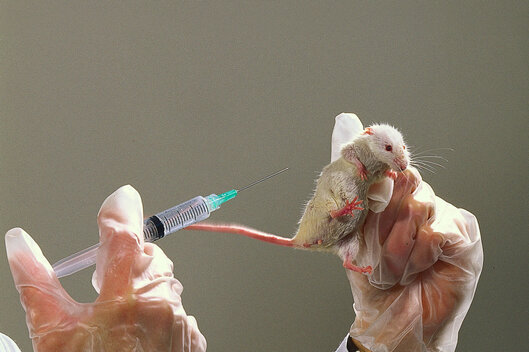How to provide mice with a nice homeMice as pets
Color mice are popular pets: they are curious, sociable rodents that love to climb and are always exciting to watch. They owe their name to their colorful fur. With our tips for keeping mice in a species-appropriate way, these lively animals are guaranteed to feel comfortable in your home.
Of the many types of mice, colorful mice are the most common pets for animal lovers. Mice are very small and adorable, but still have high demands that you should not underestimate.
Profile
- Life expectancy: Color mice have a live expactancy oft wo to three years
- Origin: The color mouse is descended from the wild house mouse. This originally comes from the savannahs and steppes of Southeast Asia, North Africa and Southern Europe. With the exception of the tropical regions of Africa, color mice can be found all over the world.
- Size: Mice reach a body length of around seven to eleven centimetres, plus a tail length of seven to ten centimetres.
- Weight: Mice weigh one to two grams at birth, adult animals weigh between 25 and 50 grams.
- Gestation period: Females are pregnant for 21 to 23 days. A litter consists of an average of eight to ten young.
- Food/nutrition: Color mice mainly require grain food consisting of various cereals and seeds as well as some fresh food every day and occasionally animal protein.
- Lifestyle: Mice are very social animals that should never be kept alone, but at least in pairs, preferably in small groups. They also need space, exercise and plenty of climbing and hiding places.
Always keep mice in groups
Color mice are very social animals. They must therefore not live alone under any circumstances, but need conspecifics. It is best to keep the rodents in a small group of four or more color mice. As mice reproduce quickly, you should either keep only females together or females with a neutered male. Keeping several unneutered males is tricky and not recommended, as this can lead to serious fights. If you would like to adopt these little rodents, it is best to look around an animal shelter first. Many color mice are already waiting there for a new loving home.
Plenty of space for active mice
Color mice are usually active after dark and at night. They climb a lot, are curious and like to explore their surroundings. A large, well-structured enclosure is necessary so that they can pursue their preferences. Mice should therefore not be kept in a standard cage, as these are generally too small. Two mice require a base area of 100 x 50 centimeters. For each additional animal, the space should be increased by 20 percent. Suitable housing for color mice as pets includes rat enclosures or bird aviaries that meet the minimum dimensions mentioned above. When buying, make sure that the distance between the individual bars is no more than five millimetres, otherwise mice will climb out easily. Also offer your mice daily exercise outside the enclosure. This should only be done in secure places under supervision, such as on a table whose edge is secured with a sufficiently high wooden rail.
Sufficient bedding is important
- Line the enclosure with a thick layer of newspaper or wrapping paper. This creates an absorbent second layer that reduces the smell of urine.
- Then spread a layer of commercially available small animal bedding or dedusted wood shavings about 20 centimetres thick on top.
- Mix in additional hay, straw, shredded paper, kitchen paper, branches and leaves, as mice like to dig tunnels. This makes them more stable.
Establishment of a mice home
- Mice love it when you make their home three-dimensional. To do this, create several levels in the enclosure. These should not be too high or should overlap so that the rodents do not fall too far in the event of a fall. It is best to connect the levels with ladders, bridges or ropes.
- Mice also really enjoy seesaws and running wheels. The wheel should have a diameter of at least 25 to 30 centimeters, have a closed running surface and only be open on one side.
- A box for digging with low-dust small animal bedding or dry leaves also enriches the mice's life. If you also hide food in it, it will be even more exciting for the mice.
- Offer the animals several burrows and sleeping houses, each with two sufficiently large exits. Mice love such hiding places because they naturally live in underground burrows. All furnishings must be well secured.
Watching instead of cuddling
If you like watching these lively animals and enjoy designing their enclosure, mice are the right pets for you. This is because these small rodents do not like to be stroked or picked up. Under no circumstances should children mistake mice for cuddly toys. Mice are also very delicate and fragile animals. If you need to move your pet to clean the home or for a visit to the vet, you should carefully remove the small rodents from the enclosure one by one. Use both hands to form a cave. Alternatively, you can also use an empty toilet roll for your mouse to climb into.
MICE MAINLY LIKE VEGETARIAN FOOD
Mice live on both plant and animal food. However, their diet is predominantly vegetarian. Cereals and seeds are at the top of their menu. Ready-made food mixtures are available commercially for this purpose - one level teaspoon a day is enough for an adult mouse. You should also give them small amounts of fresh vegetables and greens such as lettuce and herbs. Fruit also tastes good to mice. However, you should only give them small amounts, otherwise the risk of diabetes increases. As a treat, it is best to offer your pets animal protein once or twice a week in the form of mealworms, quark or a hard-boiled egg with shell. Free-living mice spend a lot of time looking for and eating food, especially at night - they eat up to 200 small meals a day. You should therefore also schedule feeding times for the late afternoon or evening hours. In order to provide the animals with additional stimulation in addition to playful activities, it is best to distribute most of the grain food outside the food bowl. Mice must always have access to food and drinking water, preferably in nipple drinkers. As mice's incisors are constantly growing, you should offer them branches - for example from unsprayed fruit trees - to gnaw on.




